[学习笔记] CS131 Computer Vision: Foundations and Applications:Lecture 9 深度学习
深度学习
So far this week
- Edge detection
- RANSAC
- SIFT
- K-Means
- Linear classifier
- Mean-shift
- PCA/Eigenfaces
- Image features
Current Research
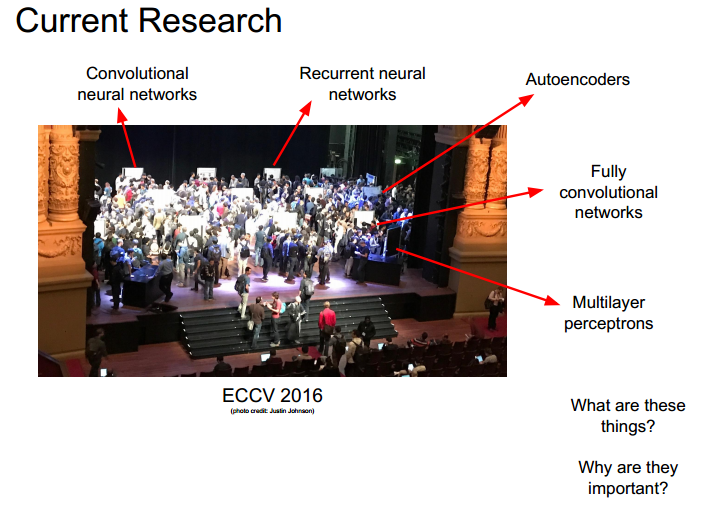
- Learning hierarchical representations from data
- End-to-end learning: raw inputs to predictions
- can use a small set of simple tools to solve many problems
- has led to rapid progress on many problems
- Inspired by the brain(very loosely!)
Deep learning for different problems
vision tasks
visual recognition

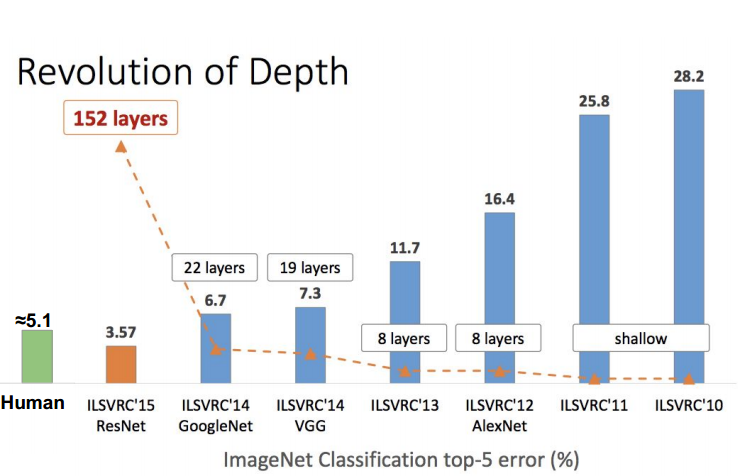
object detection: what and where

object segmentation
image caption
visual question answering
super resolution
image retrieval
style transfer
outside vision tasks
- Machine Translation
- Text Synthesis
- Speech Recognition
- Speech Synthesis
Motivation
Data-driven approach:
- collect a dataset of images and labels
- use machine learning to train an image calssifier
- evaluate the classifier on a withheld set of test images
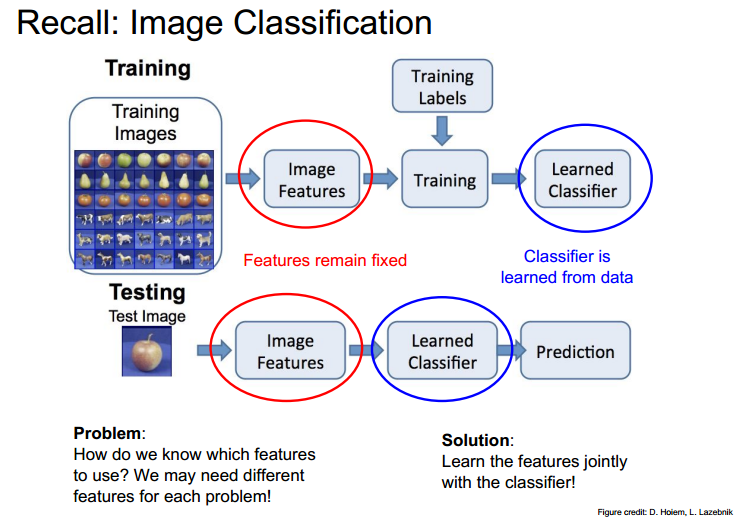
feature learning
what is feature learning?[^what is feature learning]
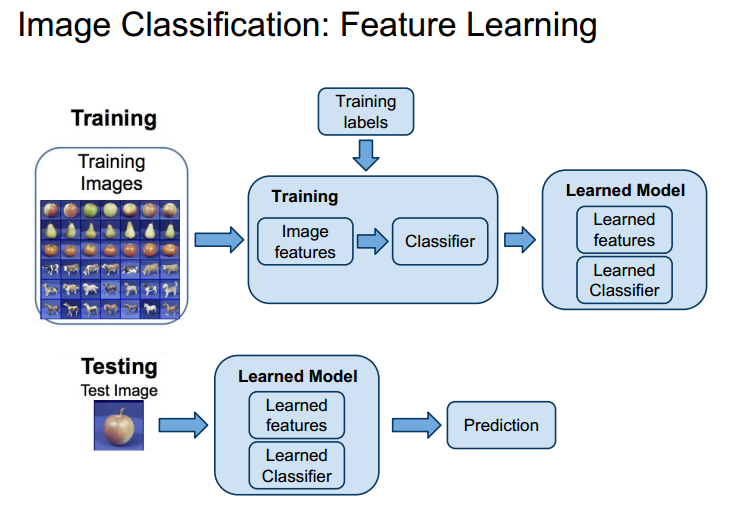
deep learning
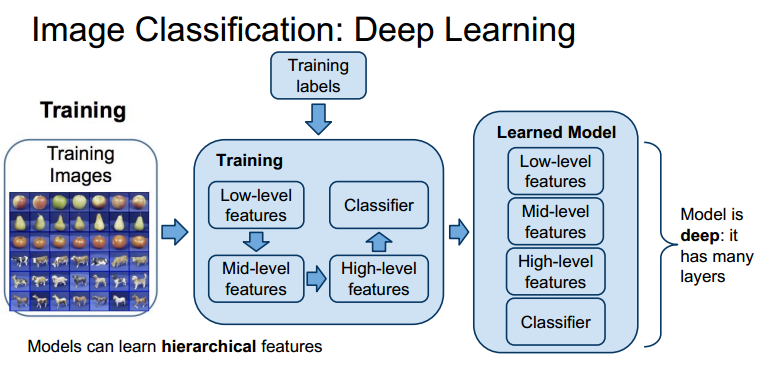
Supervised learning

linear regression
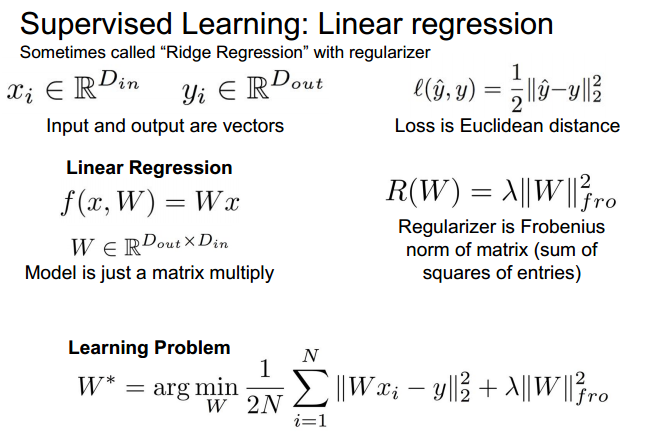
neural network
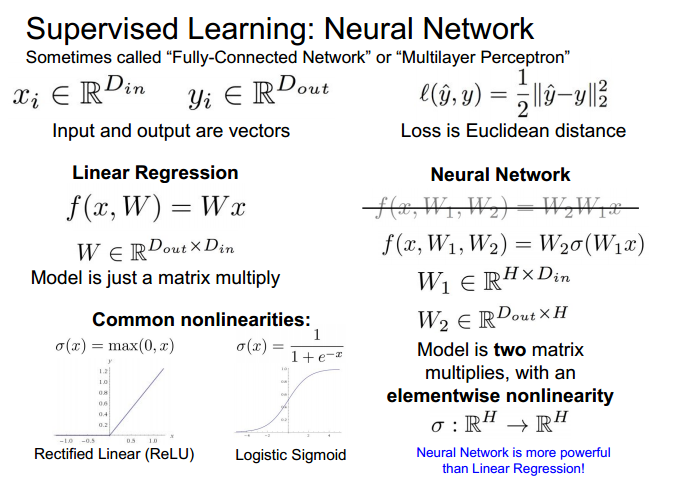
neural networks with many layers
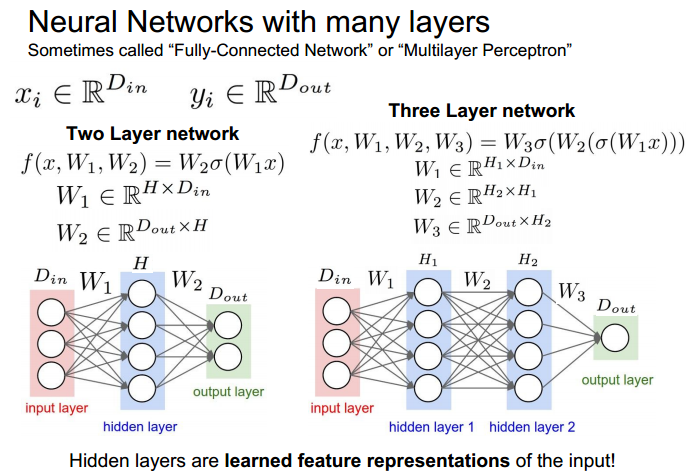
Gradient descent
how to find the best weights \(w^T\)
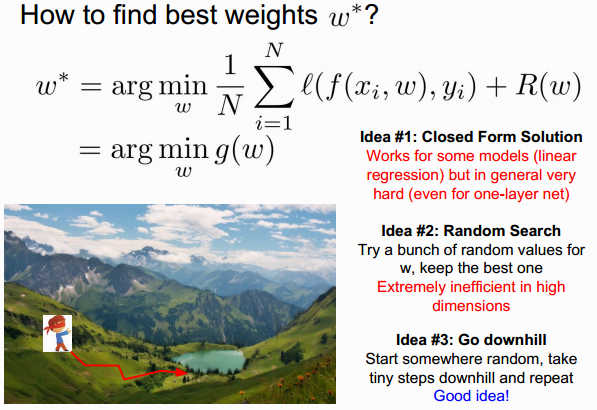
which way is down hill?

gradient descent
fancier rules:
- Momentum
- NAG
- Adagrad
- Adadelta
- Rmsprop
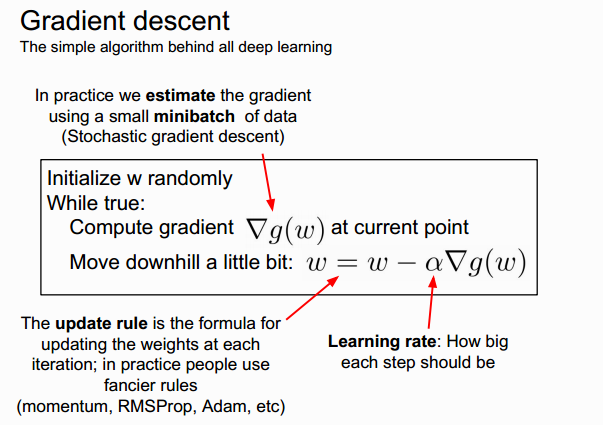
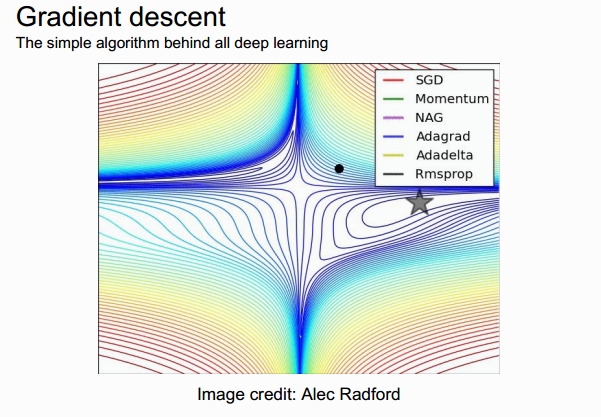
这里以后可以再 看看!
Backpropagation
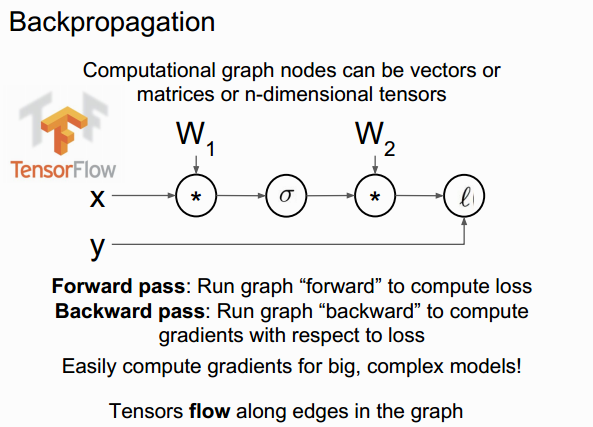
a two-layer neural network in 25 lines of code
import numpy as np
D,H,N = 8, 64,32
#randomly initialize weights
W1 = np.random.randn(D,H)
W2 = np.random.randn(H,D)
for t in xrange(10000):
x = np.random.randn(N,D)
y = np.sin(x)
s = x.dot(W1)
a = np.maxium(s,0)
y_hat = a.dot(W2)
loss = 0.5*np.sum((y_hat-y)**2.0)
dy_hat = y_hat - y
dW2 = a.T.dot(W2.T)
da = dy_hat.dot(W2.T)
ds = (s > 0)*da
dW1 = x.T.dot(ds)
W1 -= learning_rate*dW1
W2 -= learning_rate*dW2
[^what is feature learning]:
In Machine Learning, feature learning or representation learningis a set of techniques that learn a feature: a transformation of raw data input to a representation that can be effectively exploited in machine learning tasks. This obviates manual feature engineering, which is otherwise necessary, and allows a machine to both learn at a specific task (using the features) and learn the features themselves.
Feature learning is motivated by the fact that machine learning tasks such as classification often require input that is mathematically and computationally convenient to process. However, real-world data such as images, video, and sensor measurement is usually complex, redundant, and highly variable. Thus, it is necessary to discover useful features or representations from raw data. Traditional hand-crafted features often require expensive human labor and often rely on expert knowledge. Also, they normally do not generalize well. This motivates the design of efficient feature learning techniques, to automate and generalize this.
Feature learning can be divided into two categories: supervised and unsupervised feature learning, analogous to these categories in machine learning generally.
In supervised feature learning, features are learned with labeled input data. Examples include Supervised Neural Networks, Multilayer Perceptron, and (supervised) dictionary Learning.
In unsupervised feature learning, features are learned with unlabeled input data. Examples include dictionary learning, independent component analysis, autoencoders, and various forms of clustering.
[学习笔记] CS131 Computer Vision: Foundations and Applications:Lecture 9 深度学习的更多相关文章
- [学习笔记] CS131 Computer Vision: Foundations and Applications:Lecture 1 课程介绍
课程大纲:http://vision.stanford.edu/teaching/cs131_fall1718/syllabus.html 课程定位: 课程交叉: what is (computer) ...
- [学习笔记] CS131 Computer Vision: Foundations and Applications:Lecture 2 颜色和数学基础
大纲 what is color? The result of interaction between physical light in the environment and our visual ...
- [学习笔记] CS131 Computer Vision: Foundations and Applications:Lecture 4 像素和滤波器
Background reading: Forsyth and Ponce, Computer Vision Chapter 7 Image sampling and quantization Typ ...
- [学习笔记] CS131 Computer Vision: Foundations and Applications:Lecture 3 线性代数初步
向量和矩阵 什么是矩阵/向量? Vectors and matrix are just collections of ordered numbers that represent something: ...
- Computer Vision: Algorithms and ApplicationsのImage processing
实在是太喜欢Richard Szeliski的这本书了.每一章节(after chapter3)都详述了该研究方向比較新的成果.还有很多很多的reference,假设你感兴趣.全然能够看那些參考论文 ...
- Deep Learning 10_深度学习UFLDL教程:Convolution and Pooling_exercise(斯坦福大学深度学习教程)
前言 理论知识:UFLDL教程和http://www.cnblogs.com/tornadomeet/archive/2013/04/09/3009830.html 实验环境:win7, matlab ...
- Sony深度学习框架 - Neural Network Console - 教程(1)- 原来深度学习可以如此简单
“什么情况!?居然不是黑色背景+白色文字的命令行.对,今天要介绍的是一个拥有白嫩的用户界面的深度学习框架.” 人工智能.神经网络.深度学习,这些概念近年已经涌入每个人的生活中,我想很多人早就按捺不住想 ...
- 百度DMLC分布式深度机器学习开源项目(简称“深盟”)上线了如xgboost(速度快效果好的Boosting模型)、CXXNET(极致的C++深度学习库)、Minerva(高效灵活的并行深度学习引擎)以及Parameter Server(一小时训练600T数据)等产品,在语音识别、OCR识别、人脸识别以及计算效率提升上发布了多个成熟产品。
百度为何开源深度机器学习平台? 有一系列领先优势的百度却选择开源其深度机器学习平台,为何交底自己的核心技术?深思之下,却是在面对业界无奈时的远见之举. 5月20日,百度在github上开源了其 ...
- Python入门学习笔记4:他人的博客及他人的学习思路
看其他人的学习笔记,可以保证自己不走弯路.并且一举两得,即学知识又学方法! 廖雪峰:https://www.liaoxuefeng.com/wiki/0014316089557264a6b348958 ...
随机推荐
- [POJ2104] K – th Number (可持久化线段树 主席树)
题目背景 这是个非常经典的主席树入门题--静态区间第K小 数据已经过加强,请使用主席树.同时请注意常数优化 题目描述 如题,给定N个正整数构成的序列,将对于指定的闭区间查询其区间内的第K小值. 输入输 ...
- LVS的使用
lvs: Linux Virtual Server l4:四层交换:四层路由: 根据请求报文的目标IP和PORT将其转发至后端主机集群中的某一台主机(根据挑选算法): netfilter: PRERO ...
- Untiy中的数据平滑处理
本文章由cartzhang编写,转载请注明出处. 所有权利保留. 文章链接:http://blog.csdn.net/cartzhang/article/details/50680237 作者:car ...
- ajax提交数据遇到400异常,原因及解决方案
开发中遇到的问题, ajax的URL写的正确但是确无法正常跳转, 开发者模式下显示请求400异常. 前后台代码如下 ------------------------------------------ ...
- Oracle-定时任务
PLSQL->新建->命令行窗口 --存储过程 create or replace procedure prd_remove_error_data AS BEGIN UPDATE rpt_ ...
- android优化 清除无效代码 UCDetector
android下优化 清除无效 未被使用的 代码 UCDetector 官方下载地址:http://www.ucdetector.org/index.html UCDetector 是 eclips ...
- 从头认识java-13.5 利用泛型构建复杂模型
这一章节我们来展示一下如何利用泛型构建复杂模型? 1.元组列表 我们之前已经说过元组是一个复杂的模型,能够返回多对象. package com.ray.ch11; import java.util.A ...
- NAS配置Time Machine,在D-Link DNS-320上的配置笔记
今天打算把Time Machine备份的工作交给NAS,曾经是放在一块外置硬盘上的,尽管速度要比NAS快,可是每次插拔外接都有些麻烦.而NAS又具有实时在线.定时关机启动的功能.配合Time Mach ...
- Jmeter执行多条Mysql语句报错
花了很长时间找原因,Jmeter一直返回的是MySql语法错误,就写了两条很简单的删除语句,并且在MySql里可以正常执行 包括换了jdbc驱动包,更改不同的Query Type等 后来发现两条语句拆 ...
- 42.写入XML
#include <QtGui> #include <QtXml> #include <iostream> //创建一个树结构 void populateTree( ...
